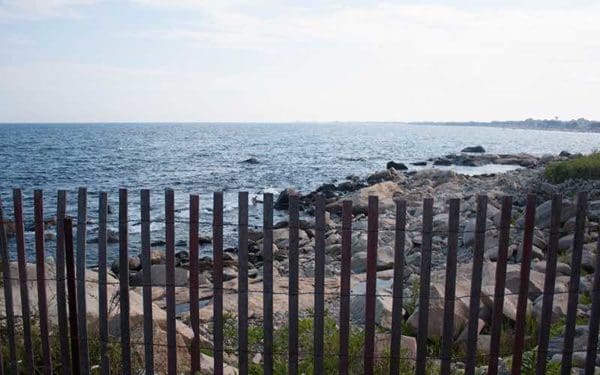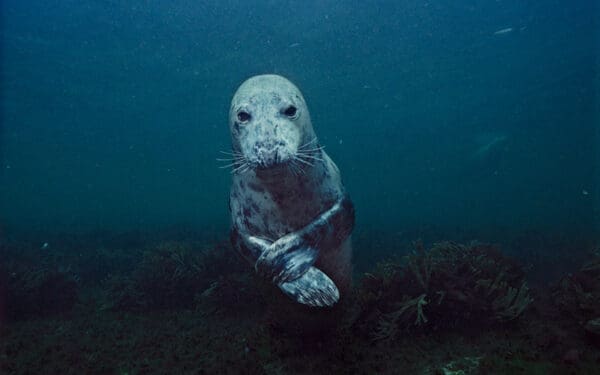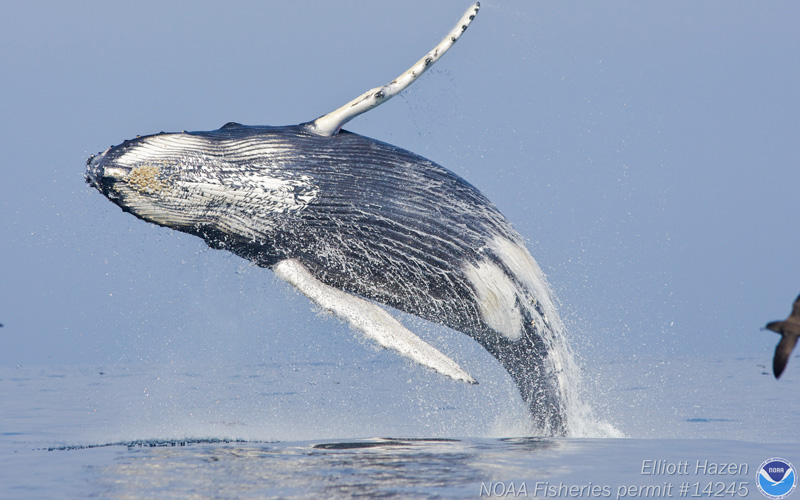
New England's first and only National Marine Sanctuary needs stronger protections for critical habitat, precious marine wildlife, and its historical resources. Photo: NOAA.
Summers in New England bring an abundance of marine wildlife to our waters, making it a top destination to see aquatic life. Just a few miles off Massachusetts coast, a special place stands out for attracting over one million visitors to go on whale watching trips every year: Stellwagen Bank National Marine Sanctuary. Here, pods of dolphins racing over the surface and majestic humpback whales breaching out of the water put on spectacular shows that awe young and old alike. But, the future of our Sanctuary is at stake.
Designated in 1992, Stellwagen is the first, and only, national marine sanctuary in our region. But poor management and weak protections by the federal government have jeopardized its resources. Stronger protections would allow marine wildlife to thrive in the Sanctuary and help build the ability of our marine ecosystem to withstand the impacts of climate change.
Recently, the federal government issued a draft of a new plan to manage the Sanctuary over the next decade. But the plan’s new measures fall short. CLF is urging federal managers at NOAA to revise its draft management plan and make Stellwagen Bank a true sanctuary where wildlife can thrive.
An Ocean Treasure at Stake
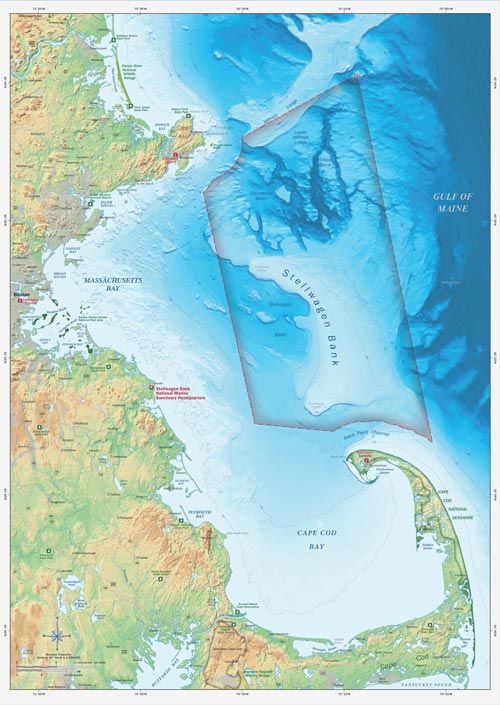
Located 21 miles from Boston in the Gulf of Maine, Stellwagen Bank National Marine Sanctuary spans 842 square miles. That’s about three-quarters the size of Rhode Island.
The shallow banks, boulder reefs, and sand plains of Stellwagen interact with wind, tides, and currents, resulting in an extraordinary abundance of life. Stellwagen supports over 575 species of fish, seabirds, marine mammals, turtles, and invertebrates.
That rich biodiversity has fueled some of our region’s most economically and culturally valuable fisheries, including lobster, haddock, herring, mackerel, scallops, and cod. In addition, 17 species of whales, dolphins, and porpoises frequent the sanctuary.
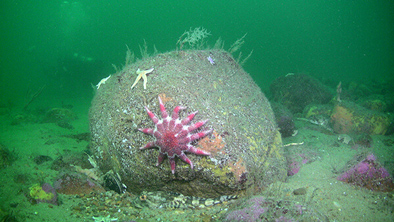
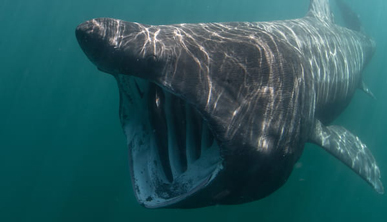
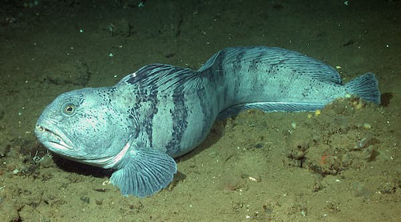
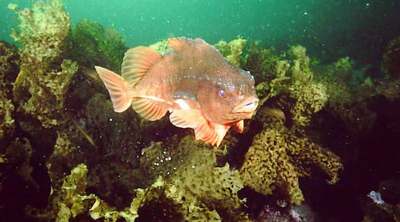
It’s also home to maritime heritage resources, too. Numerous shipwrecks sit on the Sanctuary’s seafloor and serve as valuable time capsules. Wrecks like the steamship Portland, “New England’s Titanic,” preserve the lost stories of people whose passing dealt a devastating blow to the history and culture of important coastal communities. The crew of this ship, for example, included 19 African Americans from Portland. Their loss was a contributing factor in the closure of the Abyssinian Meeting House, Maine’s oldest African American church.
Over time these vessels have become a refuge for a myriad of species. Colorful anemones, beautifully scattered sea stars, and curious fish use the walls and empty hulls of these sunken ships as their home.
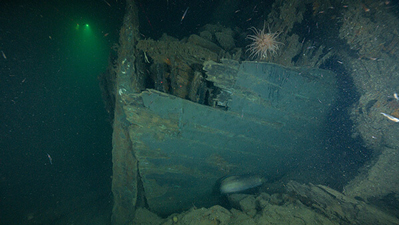
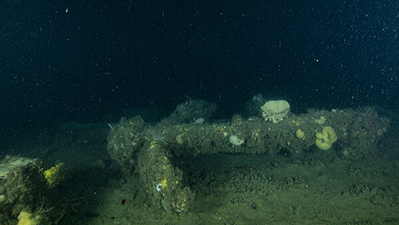
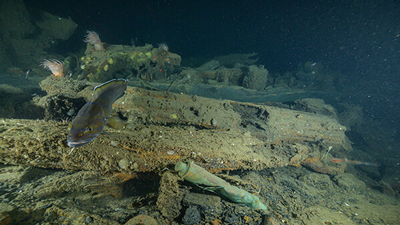
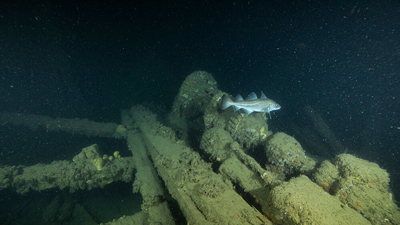
A Sanctuary in Name Only
The extraordinary resources of Stellwagen Bank made it worthy of its designation as a National Marine Sanctuary. But sadly, this designation alone has not done enough to protect the remarkable resources in Stellwagen. Fishing, shipping traffic, and the growing threats of climate change have taken a toll on Stellwagen’s once extraordinary ecosystem.
A 2020 government report documents in detail the depletion of marine wildlife, degradation of seafloor habitat, increasing noise levels, and impacts on maritime heritage resources in the Sanctuary. Highlights include:
- Depletion of Atlantic cod: The Atlantic cod population in the Gulf of Maine is near a historic low. Stellwagen remains possibly the last place where these fish regularly aggregate.
- Degraded Habitat: The impacts of commercial fishing gear, primarily gear that disturbs the seafloor, have caused habitat quality to degrade measurably.
- Increasing Noise: More ships and boats in the Sanctuary have dramatically increased underwater noise levels. This affects many species’ ability to communicate, feed, and more. This is especially concerning for humpback whales and North Atlantic right whales that already face significant threats from vessel strikes and accidental entanglements with fishing gear.
- Maritime Heritage at Risk: Nearly every shipwreck in the Sanctuary has been affected by contact with fishing gear.
Stellwagen Bank is an ecological gem. It deserves to be a safe harbor – a true sanctuary. Federal managers must establish meaningful measures to protect this ocean treasure. However, the new draft management plan fails to do that.
The New Plan Will Shape the Future of Stellwagen Bank – For Better or For Worse
The National Marine Sanctuaries Act requires NOAA to develop and periodically revise management plans for each sanctuary. A central purpose of the Act is to maintain, restore, and protect important ocean wildlife, habitats, and cultural resources. To date, management of Stellwagen has failed to safeguard the sanctuary’s resources. And the latest updates to the management plan offer little action to address the ongoing problems facing the sanctuary.
For starters, the new draft plan does not include any new concrete steps to address habitat degradation or the decline of wildlife. Instead, the plan focuses mainly on research, monitoring, outreach, and education. While essential, these efforts will do nothing to protect Stellwagen’s critical habitat and marine resources.
The dire situation of the Sanctuary calls for strong and effective protection measures. Federal regulators should move beyond documenting the problems and start implementing real on-the-ground measures to restore and protect Stellwagen Bank.
Time for Bold Action
Simply put, the draft management plan is wholly inadequate. That’s why CLF is asking NOAA to revise and issue a new plan with meaningful management actions.
We are asking for bold changes to the current sanctuary management plan, including:
- Protect Atlantic cod: Sanctuary managers should work with federal fishery managers to ban all directed fishing for cod in Stellwagen to enable the species to recover. Any recreational fishing allowed would require the release of all cod and the use of best practices to minimize harm. NOAA should also expand protections for important cod spawning areas within the Sanctuary.
- Safeguard marine mammals from noise and vessel strikes: Sanctuary managers should develop and enforce measures to reduce noise pollution to improve habitat and communication space that ocean wildlife – like North Atlantic right whales– rely on. Sanctuary managers should also set mandatory vessel speed limits to reduce their risk of hitting marine mammals.
- Protect forage species: Sanctuary managers should work with federal fishery managers to bar fishing for unmanaged forage species. Some of these species, like sand lance and copepods, are prey for vulnerable wildlife such as Atlantic cod, North Atlantic right whales, and roseate terns.
- Establish a fully protected research reserve: A fully protected research reserve would enable marine scientists to study the impact of climate change and human activities on the Sanctuary.
For decades, CLF has fought to protect our most remarkable ocean ecosystems. We will continue to push the government to better manage Stellwagen Bank and secure its future for generations to come.


